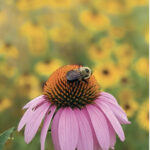Six months after Pearl Harbor and just before April 18, 1942–the day a small group of American medium bombers launched the first reprisal attack against Japan from an aircraft carrier–the army opened a military intelligence training facility in Harrisburg.
Known as the Army Air Force Air Intelligence School (this was before the Air Force became an independent service branch), it was formally established in Washington D.C., in early January of that year, according to “Piercing the Fog: Intelligence and Army Air Forces Operations in World War ll,” a 1996 history published by Air Force Historical Studies Office.
A scramble for a facility in those early days of the war first landed the school at the University of Maryland in College Park in February, but only temporarily.
“Air Force leaders recognized the facilities at College Park would not be adequate for the expansion due to come,” according to “Piercing the Fog.” Even before the first class of 33 officers had graduated from the college course, the AAF paid $300,000 to purchase the Harrisburg Academy in Harrisburg, Pennsylvania, for the new site of air intelligence training.”
At the time, the future of Harrisburg Academy, founded in 1784 by John Harris Jr., was in question. The Great Depression took a toll on enrollment, but the school managed to continue. It moved in 1959 to its present location on Erford Road in Wormleysburg.
The gothic-looking structure the military bought, located on the grounds of what is now Dixon University Center on N. 2nd Street, was demolished in the early 1990s.
At America’s entry into World War ll on Dec. 7, 1941, the military seized many private properties. Private schools, for some reason, seemed attractive. In Washington, the U.S. Navy took a girls’ school at Massachusetts and Nebraska avenues. “It offered $800,000 for property easily worth $5 million and finally agreed to pay $1.1 million,” according to David Brinkley’s account in “Washington Goes to War.”
Despite its title, the air intelligence school was better known for learning to interpret photos taken by air reconnaissance planes “since that was two-thirds of its original curriculum; the additional one-third was combat intelligence training.”
Combat training included prisoner of war interrogation, counter espionage, learning the organizations of the Axis air forces, Soviet air force logistics, air defense deception and an array of other intelligence gathering skills, according to the Air Force Historical Research Agency.
The school’s first commandant was Col. Egmont F. Koenig and among his students were some notable figures from Hollywood, publishing, sports and literature–actors Robert Preston, Burgess Meredith and Bruce Cabot attended, according to the book “Josh: My Up and Down, In and Out Life,” by writer/producer Joshua Logan, also a student. Novelist Thornton Wilder and Golfer Bobby Jones were students.
Other alumni were Philip Graham, publisher of The Washington Post in the 1960s who during the war served on the intelligence staff of the Far East Air Force, and Major Jesse Marcel, the air force officer who first reported the Roswell UFO incident in 1947.
It’s not clear why the military chose the old Harrisburg Academy for its intelligence school. In spring 1944, the military moved the school out of the Harrisburg Academy to Orlando Fla., but, over the course of the war, according to the historical account, thousands of students passed through its doors.





